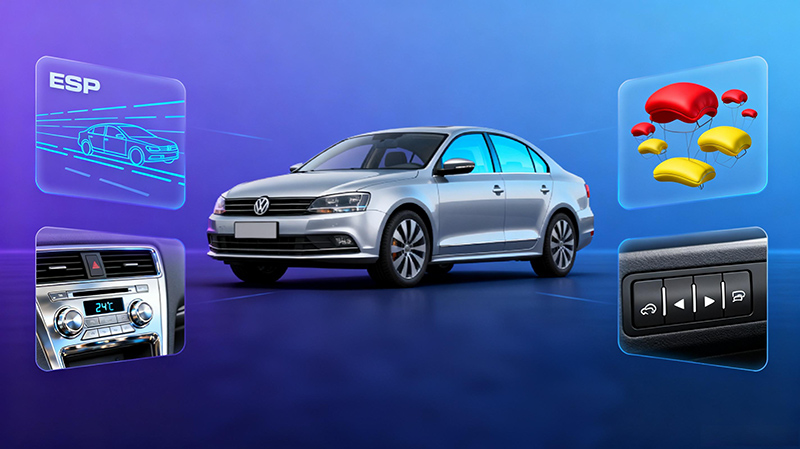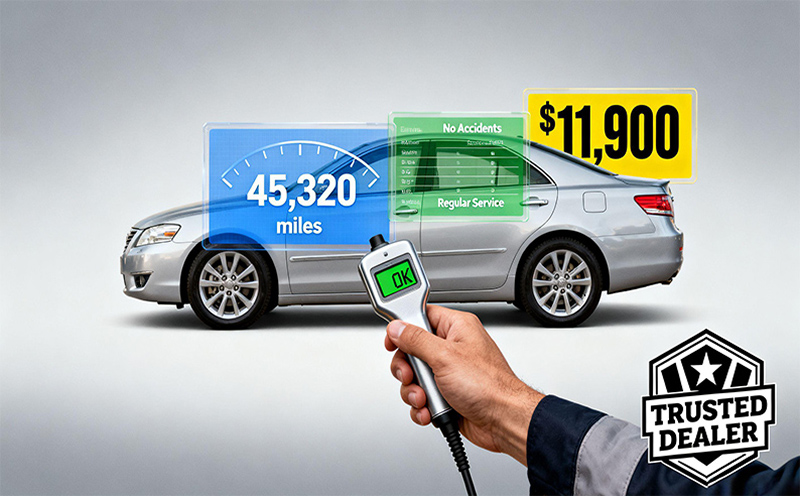Buying a used car is a practical and economical option, but the process can be challenging. This guide provides comprehensive advice from preparation to completion, based on industry best practices, helping you avoid common pitfalls and find reliable transportation.
Comprehensive Preparation Stage
Budget Planning in Detail
Developing a detailed budget is fundamental to a successful car purchase. Beyond the obvious purchase price, consider the following hidden costs: Government fees include mandatory expenses like transfer fees, registration fees, and annual road tax. These fees vary by region, so it’s recommended to consult your local traffic authority in advance. Regarding insurance costs, third-party liability insurance is the minimum legal requirement. While comprehensive coverage is more expensive, it provides more comprehensive protection and is particularly suitable for new or high-value vehicles.
Initial maintenance costs are often overlooked, but they are crucial. Basic maintenance, including oil and filter changes and brake inspections, is typically required immediately after purchasing a used car. The industry recommends setting aside $500-1000 in your budget for this expense. An emergency fund is crucial for worry-free driving after purchasing a car. It’s recommended to set aside 15-20% of the vehicle’s price to cover unexpected repairs or replacement of critical parts.
It’s crucial to create a detailed budget, listing all expected expenses and their estimated amounts, and leaving a 10% margin to account for market price fluctuations. Although the latest report indicates that global used car market prices will stabilize by 2025, price differences between different regions remain significant, so it is recommended to thoroughly research local market prices before purchasing. Such budget planning can ensure that you will not be short of funds throughout the entire car purchasing process.
Legal Document Preparation
Ensuring all legal documents are complete and valid is a prerequisite for legal driving. Regarding driving eligibility, you need to confirm whether your visa type allows driving. Long-term residents should obtain a local driver’s license, as industry data shows that this generally results in lower insurance rates.
Insurance requirements vary by region, so it’s important to thoroughly understand local minimum insurance requirements. It’s recommended to obtain quotes from at least three insurance companies and compare them, paying attention to key terms such as coverage, deductibles, and claims processing. When purchasing insurance, pay attention to the effective date to ensure coverage is immediately available after the vehicle transfer.
Proof of residence is essential for vehicle registration. Prepare a recent utility bill or bank statement as proof of address; note that these documents typically need to be issued within three months to be valid. If you rent, you may need to provide a lease agreement and proof of residence from your landlord.

Vehicle Search Strategy
Channel Selection Guide
Online platforms are the primary source for finding used cars. Professional websites offer detailed filters, allowing you to narrow your search based on price, mileage, age, and other criteria, but you should be more careful when selecting a vehicle’s condition.
Dealer channels include brand-name certified pre-owned vehicles and independent dealerships. Brand-name certified pre-owned vehicles typically undergo rigorous inspections and offer extended warranties, but they come with a higher price tag. Independent dealerships offer a wider selection and more competitive pricing, but choose a reputable dealer.
Local dealerships often offer better value. University bulletin boards often list vehicles being sold by graduates, while expat communities and social media groups are also good sources. Purchasing a vehicle through these channels may provide a more accurate picture of the vehicle’s service history.
Another avenue for purchasing a vehicle is auction houses, particularly government auctions and leasing company auctions. These vehicles typically have comprehensive maintenance records, but require an upfront deposit and understanding of the auction rules. New buyers are advised to seek professional guidance when participating in auctions.
Vehicle Selection Recommendations
It’s important to choose a vehicle that’s suitable for your local environment. Prioritize models with high market penetration, as this means easier access to parts and repair services. Industry data shows that these models generally have better reliability and better value retention.
When choosing an engine, consider your usage needs. A small engine is more economical for city commuting, while frequent long-distance driving requires a larger engine for better high-speed performance. Also pay attention to local emission standards; some older models may not meet the latest environmental requirements of the Environmental Protection Agency (EPA).
When choosing a drivetrain, consider the climate. Four-wheel drive is recommended for areas with heavy winter snow, while front-wheel drive is sufficient for normal city driving. Rear-wheel drive models generally offer greater driving pleasure, but require more caution on slippery roads.
When choosing features, prioritize practicality. Prioritize safety features such as ESP and multiple airbags. Ensure that comfort features such as air conditioning and power windows are functioning properly. Avoid overpaying for luxury features that are rarely used.

Professional Inspection Process
Key Points for Document Verification
Verifying the vehicle’s history is the first step. Use the vehicle history report service to verify accident records, mileage accuracy, ownership history, and other information. Industry experts caution against flooding and major accident records, as these vehicles can pose hidden dangers even after repair.
Analyzing maintenance records can reveal a vehicle’s true condition. Complete maintenance records from a 4S dealership are ideal, including the details of recent maintenance and mileage records. Private maintenance records should also be carefully reviewed, noting reasonable maintenance intervals and the quality of parts used.
Check the legal status of the vehicle to ensure there are no outstanding loans or legal disputes. Verify that the information on the vehicle registration certificate matches the actual vehicle, noting the registration date and annual inspection expiration date. Check with traffic authorities to see if the vehicle has any outstanding tickets or violations.
On-site Inspection Items
Exterior inspections should be conducted systematically. Check the paint for color variations under ample lighting, and use a magnet to detect body fillers. Check that the manufacturing date markings on all glass windows are consistent; any discrepancies may indicate a replacement.
Interior inspections should pay attention to detail. Check that seat wear matches the mileage. Extend the seatbelts to their full length to check for water stains or mold. Test all electronic devices, including the air conditioning, audio system, and power windows, to ensure they are functioning properly.
Mechanical inspections require professional expertise. Start the engine and listen for a smooth running sound. Check the color of the exhaust smoke. While driving, test the transmission for smooth shifting, brake sensitivity, and steering accuracy. Pay special attention to any unusual noises and vibrations.
Chassis inspections are often overlooked but crucial. Use a lift to check for rust and the integrity of the suspension components. Check the tires for even wear; any uneven wear may indicate an alignment problem.

Professional Appraisal and Transaction Negotiation
Professional Inspection Services
Third-party inspections are a wise investment. Choose a local recognized testing agency, such as the American Automobile Association (AAA), to provide relevant services. Industry data indicates that testing fees typically range from $100 to $300, but this can help prevent significant losses.
Read the test report carefully. Focus on safety-related items and any recommended repairs. Estimate necessary repair costs based on the test results, which will serve as an important basis for price negotiations.
Time the test appropriately. Arrange the test immediately after confirming interest to avoid paying an excessive deposit. It’s best to conduct the test only after the seller agrees to purchase the property, and clearly define the cost-sharing arrangements.
Price Negotiation Strategies
Be thorough before the negotiation. Collect market price data for the same model, year, and configuration, and understand the local used car market. Based on the inspection results, list any repairs needed and estimate the costs.
Negotiation requires strategy. First, emphasize the vehicle’s strengths, then objectively point out any problems. Based on the inspection report, make reasonable requests for a price reduction. Maintain a polite but firm attitude, and be prepared to walk away with your bottom line.
Negotiations aren’t limited to price. You can ask the seller to cover some repair costs or offer an extended warranty. You can also negotiate for added value, such as a full tank of fuel or new tires.
Use a secure and reliable payment method. Avoid using wire transfers or cash for large payments. Complete the transfer procedures promptly after the transaction to avoid legal risks.

Completing the Transaction and Subsequent Matters
Transfer Registration Process
Prepare all necessary documents. Typically, you’ll need the sales contract, vehicle registration certificate, insurance certificate, and identification. Check with the local vehicle registration office in advance for specific requirements. Appointing a time to complete the transfer can save time in line.
Pay fees accurately. Prepare registration fees, taxes, and other fees and understand acceptable payment methods. Some areas allow partial online payment, so you can complete this in advance to reduce in-person processing time.
Apply for license plates promptly. Understand local regulations regarding temporary license plates and ensure you’re legally on the road before your official license is issued. Some areas require a vehicle inspection before registration can be completed, so plan this in advance.
Insurance Purchase Tips
Compare insurance thoroughly. Get quotes from at least three insurance companies and compare coverage, deductibles, premiums, and other terms. Read the policy exclusions carefully to understand what’s not covered.
Get the right type of insurance. In addition to mandatory third-party liability coverage, consider comprehensive and collision coverage. Evaluate your driving experience and vehicle value to determine the right insurance plan.
Seek discounts. Inquire about discounts like safe driving discounts, multi-vehicle discounts, and anti-theft device discounts. Increasing your deductible can lower your premium, but make sure it’s within your budget.

Post-Purchase Maintenance Tips
Initial Maintenance
A comprehensive maintenance is essential. Even if the seller claims to have recently performed maintenance, it is recommended to change the engine oil and filter. Check all fluid levels, including brake fluid, transmission fluid, and coolant, and replace as necessary.
Safety inspections are essential. Check brake pad thickness, tire tread depth, and tire pressure. Test all lights and signals for proper operation. Ensure the spare tire and onboard tools are fully functional.
A deep clean is beneficial to your health. Perform a professional disinfection and cleaning of the vehicle interior, especially the air conditioning system. Check the cabin filter and replace it if necessary to ensure air quality.
The global used car market is undergoing a digital transformation. Consumers are advised to closely monitor local regulations and technological developments to ensure a smooth and industry-standard vehicle purchase process.
Long-Term Use Tips
Keep a maintenance log. Use a maintenance logbook or mobile app to record the details and mileage of each maintenance. Perform maintenance according to the manufacturer’s recommended maintenance intervals to extend the life of your vehicle.
Regular inspections are crucial. Check tire pressure and fluid levels monthly and perform a comprehensive inspection quarterly. Pay attention to unusual sounds or changes in driving feel, and troubleshoot the problem promptly.
Driving habits affect vehicle performance. Avoid sudden acceleration and braking; driving smoothly reduces mechanical wear. Warm up the engine before driving vigorously, especially in cold weather.
By following this detailed buying guide, you’ll be able to confidently navigate the entire used car buying process and secure a reliable and cost-effective vehicle. Remember, patience and careful preparation are key to a successful car purchase!












